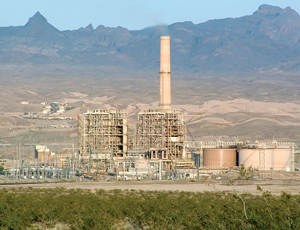Unable to find a buyer and facing expiration in 2010 of their operating permit, the owners of a controversial coal-fueled powerplant shuttered in 2005 will dismantle it starting late this year. The Mohave Generating Station near Laughlin, Nev., had operated since 1999 under a consent decree requiring air-pollution-control retrofits to improve visibility in the Grand Canyon.

Decommissioning, to start in the fourth quarter, will be complete in two years at a net cost of $300 million after the sale of equipment, says Southern California Edison spokesman Gil Alexander. A contractor has not been named. Edison was operator and 56% owner, with co-owners Salt River Project (20%), Nevada Energy (14%), and the Los Angeles Dept. of Water and Power (10%).
The powerplant ceased operations on Dec. 31, 2005, six years after agreeing to meet environmental provisions in a pact with Sierra Club, San Francisco; Grand Canyon Trust, Flagstaff, Ariz., and Washington D.C.-based National Parks Conservation Association. The agreement entailed installing a dry scrubber and a polishing bag house or fabric-filter dust collector that would have reduced the plant’s 41,354 tons of sulfur-dioxide emissions per year. The groups claimed the plant’s emissions had been clouding visibility of the Grand Canyon. The estimated cost of the retrofits and other required work was $1.1 billion.
The facility, which has been for sale, will now be dismantled and its components sold. The plant consists of two 790-MW coal-fired generating units, four 8-million-gallon coal-storage tanks, air fans, a 500-ft-tall chimney, and 20 coal pulverizers, each with a 90,400-lb-per-hour capacity. The owners are considering selling the real estate, 2,470 acres 90 miles southeast of Las Vegas, or developing an unspecified renewable-energy powerplant at the site, Alexander says. A time line or budget has not been established for either alternative, he adds. Southern California Edison will continue maintaining the 500-kV electrical switchyard.
The loss of the plant’s business puts a permanent crimp in the budgets of the Hopi and Navajo tribes, which earned up to $51 million annually in coal royalties from St. Louis-based Peabody Energy Corp.’s Black Mesa Mine. “When operations shut down at the generation station, our operations suspended,” says Peabody spokeswoman Beth Sutton.


Post a comment to this article
Report Abusive Comment